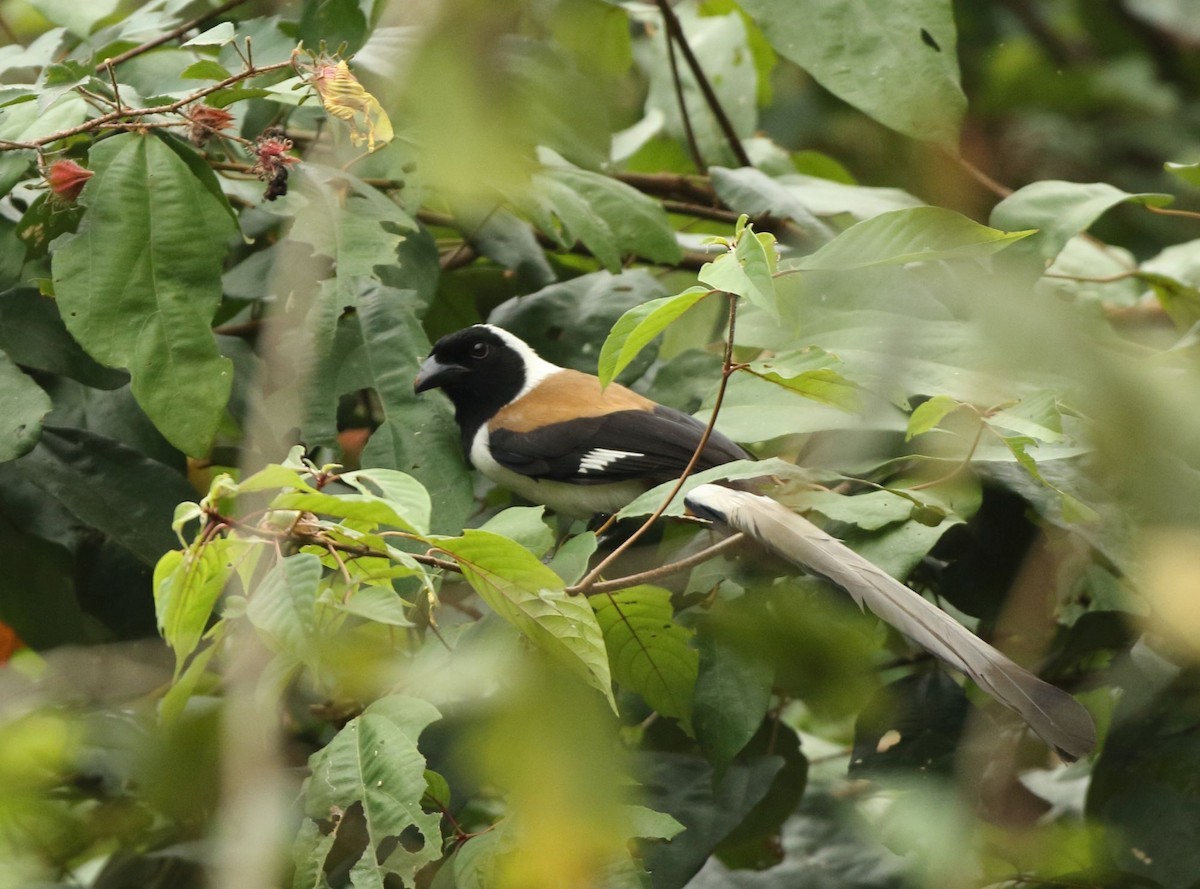White-bellied Treepie
A species of Typical Treepies Scientific name : Dendrocitta leucogastra Genus : Typical Treepies
White-bellied Treepie, A species of Typical Treepies
Botanical name: Dendrocitta leucogastra
Genus: Typical Treepies
Content
Description General Info
 Photo By Arnab Pal
Photo By Arnab Pal Description
The white of the head and body makes it easy to distinguish from the sympatric rufous treepie. This tends to be found in more dense forest and is less associated with human habitation than the rufous treepie. The white-bellied treepie is 48 cm (19 in) long. The back of the neck is white, and the throat and breast are black. The thighs are black, and the undertail coverts are chestnut. The rest of the underparts is white. The back is chestnut-brown. The wings are black and have a white patch. The rump is white. Two-thirds of the two central tail feathers are silver-grey, and the terminal third is black. The other tail feathers are black. The beak is black, and the legs are greyish-black. 
Size
45 cm
Nest Placement
Tree
Feeding Habits
White-bellied Treepie is omnivorous, with a diet including invertebrates, larvae, small vertebrates, bird eggs, nestlings, nectar, plus fruits and seeds, especially Sterculia villosa's ripe seeds. Forages often in pairs or groups, sometimes with mixed-species flocks, and may forage in undergrowth or on the ground.
Habitat
The white-bellied Treepie is commonly found in humid evergreen hill forests, including both well-preserved primary forests and secondary forests that have regrown, such as sholas. This species shows a preference for environments with thick vegetation like overgrown cardamom and abandoned rubber plantations, as well as areas with large roadside trees. It tends to avoid areas with human habitation and contact.
Dite type
Omnivorous
General Info
Feeding Habits
Bird food type
Behavior
The white-bellied treepie eats fruits, seeds, nectar, invertebrates, reptiles, rodents, nestlings and eggs. When calling, the bird bows and droops its wings. Several birds may arrive at one tree and call repeatedly during the pre-monsoon breeding season (mainly April–May but some nests from February). The nest is a platform of twigs on a medium-sized tree. Three eggs are laid, ashy grey with green and grey blotches. It is associated with mixed-species foraging flocks and is often found along with greater racket-tailed drongos. 
Distribution Area
It is found in the forests of the Western Ghats mainly south of Goa. A record from Erimalai near Dharmapuri and reports from the Surat Dangs and the southeastern Ghats of Andhra Pradesh stand outside its main distribution range. A record from central India (Chikalda, Gawilgarh) has been questioned. 

 Photo By Arnab Pal
Photo By Arnab Pal Scientific Classification
Phylum
Chordates Class
Birds Order
Perching birds Family
Crows and jays Genus
Typical Treepies Species
White-bellied Treepie